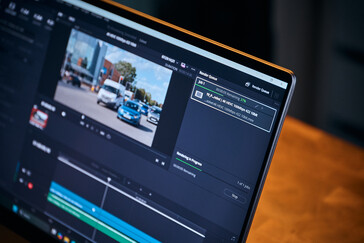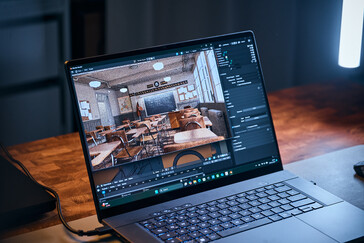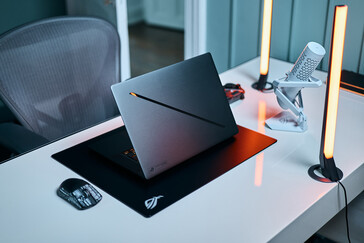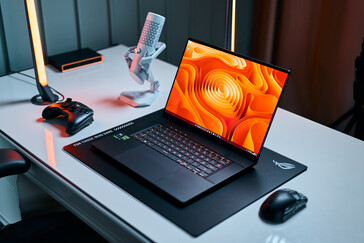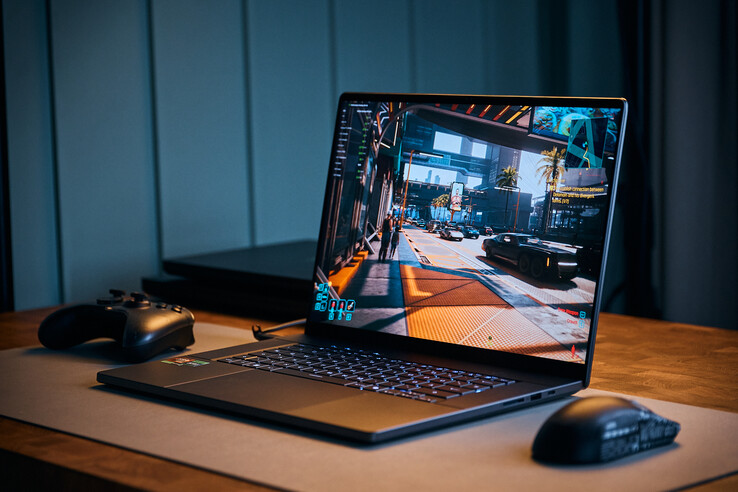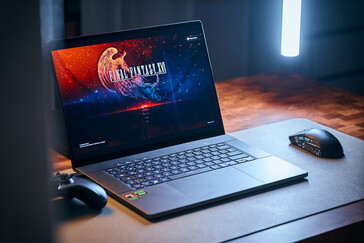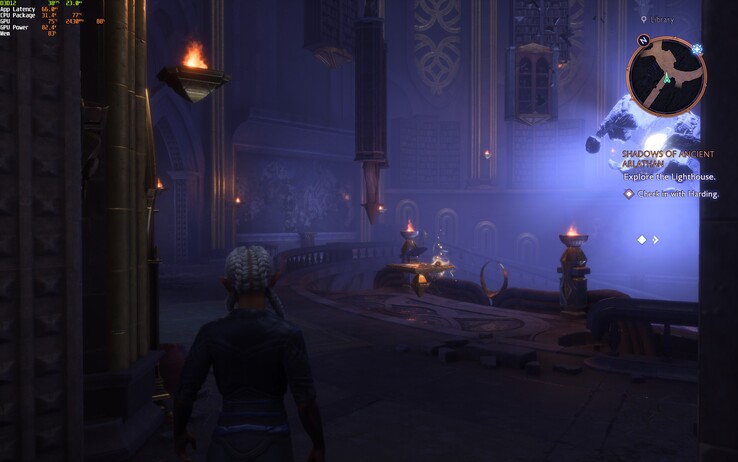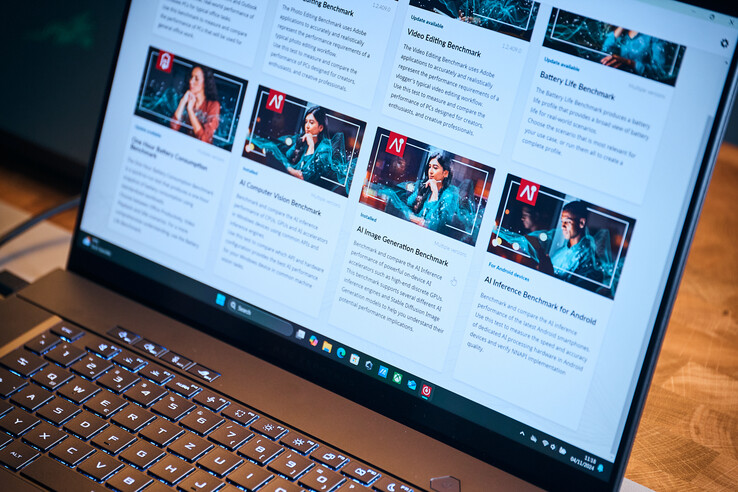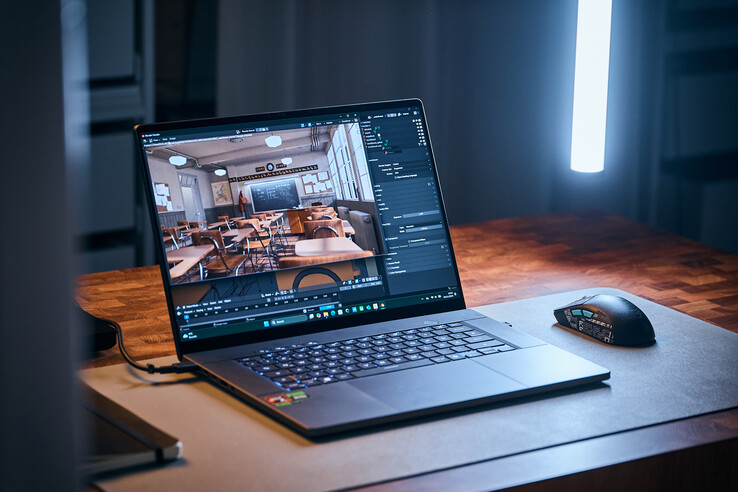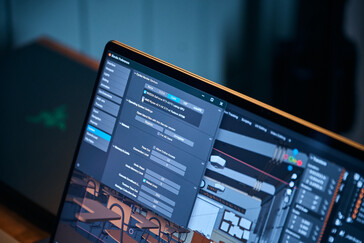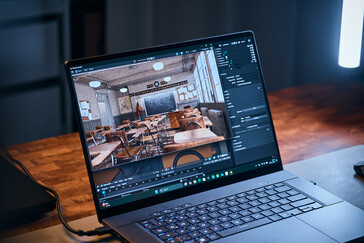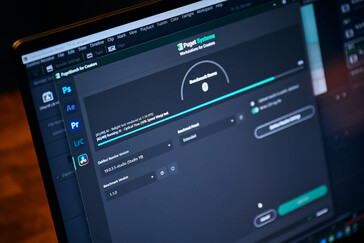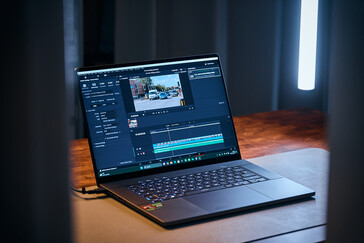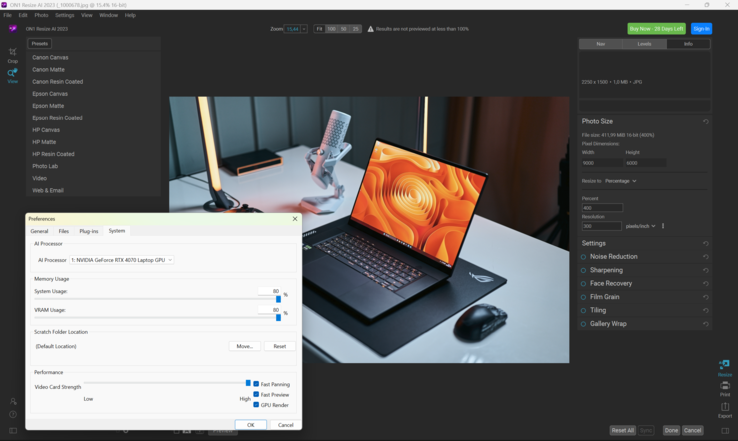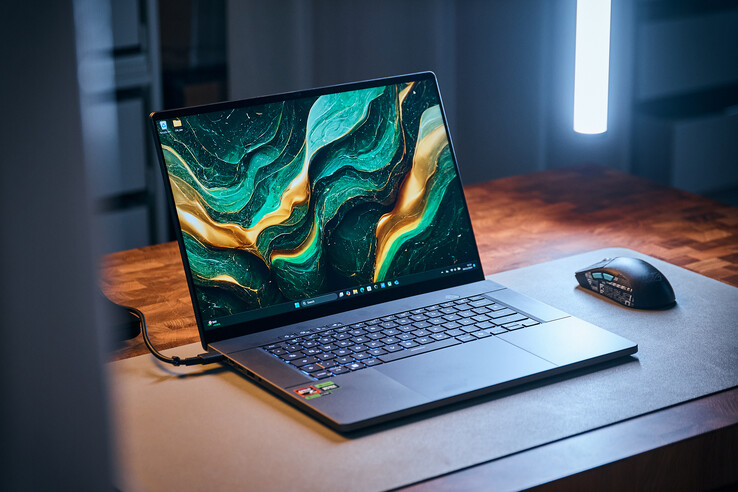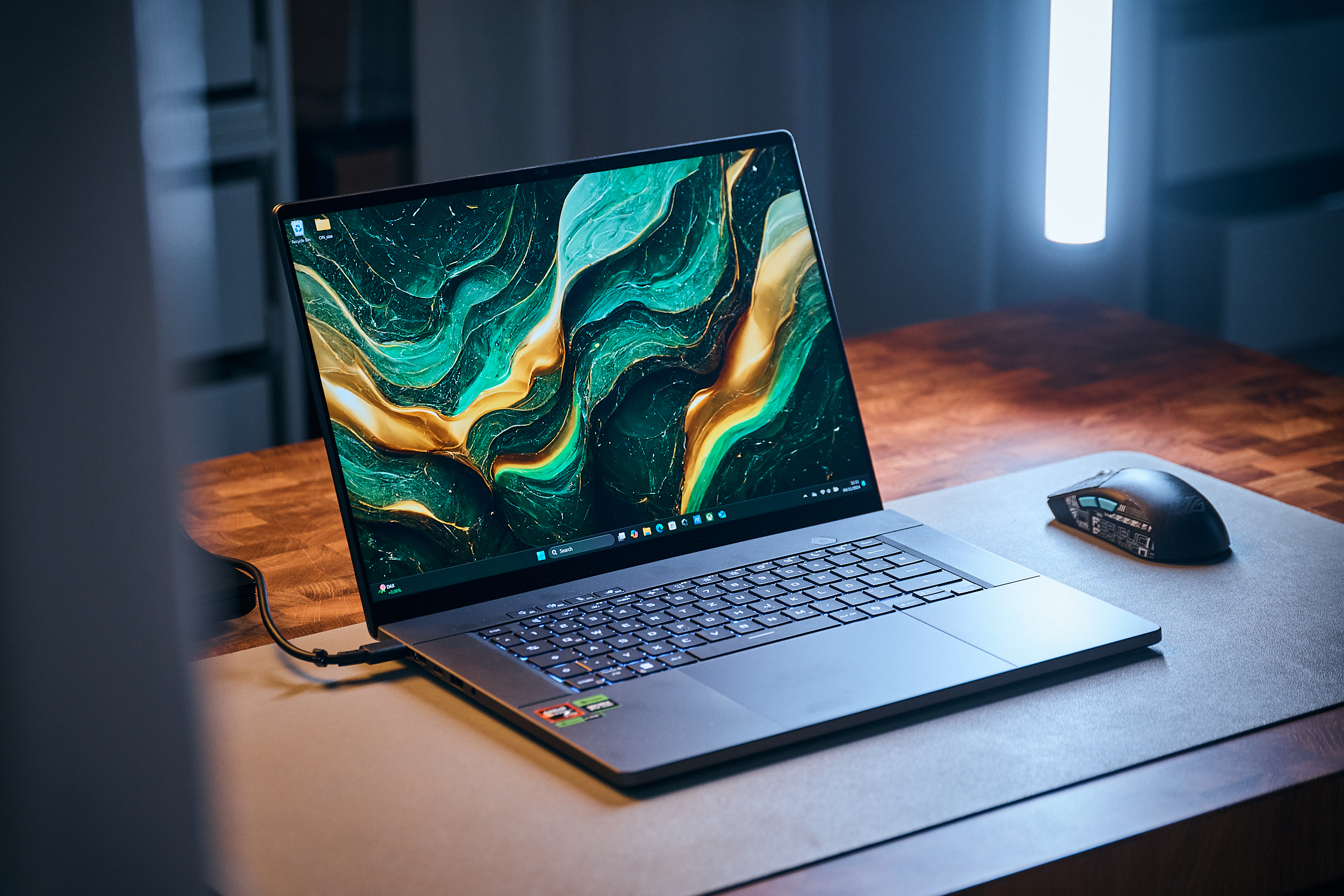
Fast becomes faster with NVIDIA's AI Boost
More in it with Team Green!
TFLOPS, stable diffusion, machine learning and, of course, artificial intelligence itself. The tech world has had a new favorite buzzword for some time now. However, while the competition is still advertising webcam filters, Nvidia already offers the corresponding performance for "real" applications with the current mobile GPU generation. So, is a dedicated GPU in a notebook worth it?(Advertising) Published 🇩🇪
What can AI do at the end of 2024?
Artificial intelligence, or AI, has become an integral part of the tech discourse since last year, and the term has now reached the mainstream consciousness. People are talking about TFLOPS, NPUs, and how much the new technology will change the way we interact with our gadgets.
Together with NVIDIA, we have therefore set ourselves the task of looking at some benchmarks. Although these are largely synthetic in nature, they are always based on "real" applications.
While the competition is still arguing about who has the fastest NPU or integrated GPU for AI-accelerated applications, NVIDIA's graphics chips already offer many times the performance.
Thanks to extensive software support, the theoretical performance also translates excellently into practice for new technologies as well as for "classic" GPU-accelerated scenarios.
Our reference system: The Asus ROG Zephyrus G16
Asus ROG's latest addition to the Zephyrus family, the ROG Zephyrus G16, is available to us as a reference system for today's tests. The slim notebook relies on Nvidia's mobile upper mid-range GPU, the RTX 4070 Laptop GPU with its 8GB VRAM, as its core component.
The GPU is supported by the Ryzen AI 9 HX 370, AMD's latest 12-core laptop APU, paired with soldered but fast 32 GB RAM.
The Strix Point processor (with 50 AI TOPS and ready for Copilot) with its integrated Radeon 890M graphics offers the perfect comparison to the dedicated NVIDIA graphics solution. After all, this is one of the fastest iGPUs at the end of 2024.
Gaming - more FPS at the touch of a button
Nvidia's AI wonder weapon - upscaling with DLSS
Gamers are the largest group to date to have had access to AI acceleration since the RTX 2000 generation. With the introduction of DLSS, Nvidia has been offering the option of rendering individual frames at a lower resolution and upscaling them to the desired target resolution for several years.
Fast forward to 2024 and we not only get higher frame rates, but in most cases also a better image than with native rendering scenarios. With the help of supercomputers, the corresponding models are trained in render farms and the dedicated solutions, such as our RTX 4070 laptop in the G16, are responsible for the local application.
Frame Generation goes one step further, and here complete frames can be "generated" from the previous frame, engine information and Nvidia's in-house AI models. The combination of both techniques enables an enormous FPS gain in supported games without consuming more power, without louder fans and without higher temperatures.
CD Project Red's Cyberpunk 2077 is packed with the very latest graphics technologies, looks great and requires a lot of power to bring the image quality on offer to the screen in a reasonably smooth manner. Even our RTX 4070 reaches its limits here, while the 890m simply doesn't stand a chance with ray tracing activated in the native resolution.
But even in the case of the dedicated solution, it is clear that more raw performance is not the solution when both waste heat and energy consumption are the limiting factors and a new approach is required if we want to have even more beautiful games in the future.
However, DLSS and Frame Generation impressively demonstrate what is possible with GPU-supported AI assistants, and what was initially unplayable is transformed into a smooth gaming experience. The practical AI helpers are also becoming increasingly popular with game developers and DLSS is now supported in 600 games and Frame Generation in more than 130 titles ... And the trend is rising!
| Cyberpunk 2077 | 2560 x 1600p Raytracing Ultra Preset | + DLSS Balanced | + DLSS Balanced / + Frame Generation |
|---|---|---|---|
| Nvidia RTX 4070 Laptop | 22.31 fps (min: 18.5/max: 26.8) | 44.59 fps (min: 38/max:51.5) | 73.38 fps (min: 65.7/max:81.7) |
| AMD RX 890m | 3.11 fps (min: 2.4/max: 4.3) | - | - |
The PC version of Final Fantasy XVI does not offer ray tracing, but even in this case the magical 60 fps limit in the highest setting with traditional rendering methods is a long way off and while DLSS alone would be enough here, the "artificially" generated intermediate frames provide the extra portion of smoothness that every gamer will be happy about.
| Final Fantasy XVI | |
| Asus ROG Zephyrus G16 GA605WI | |
| 2560x1440 Ultra Preset (Super Resolution off) | |
| 2560x1440 Ultra Preset + Quality DLSS | |
| 2560x1440 Ultra Preset + Quality DLSS FG | |
With Dragon Age: The Veilguard, Bioware once again offers an immersive role-playing game and, in addition to the classic storytelling, the latest installment also uses ray tracing for realistic lighting, correct shadows and believable reflections. In the native resolution, with the highest settings and with ray tracing activated, a few frames are again missing for a smooth gaming experience and here DLSS and Frame Generation once again provide an impressive remedy.
| Dragon Age: Veilguard | 2560 x 1600p Ultra Settings + RT | + DLSS Quality | + DLSS Quality / + Frame Generation |
|---|---|---|---|
| Nvidia RTX 4070 Laptop | 38 fps | 52 fps | 76 fps |
Fast and beautiful - Ray Reconstruction for a clear display
However, not only performance, but of course also image quality should not be neglected in modern AAA titles and this is where ray tracing in particular has made enormous progress in recent years.
The use of realistic and physically correctly calculated light rays requires not only the appropriate performance but also the use of so-called "denoisers".
As not all the rays required for a complete frame can be calculated, the missing information must be artificially "filled in", which often results in fine grain, so-called image noise and reduced detail.
With Ray Reconstruction, Nvidia offers an AI-supported option for removing or reducing this noise, with enormous advantages in terms of image quality and more efficient use for developers compared to classic "hand-built" denoisers.
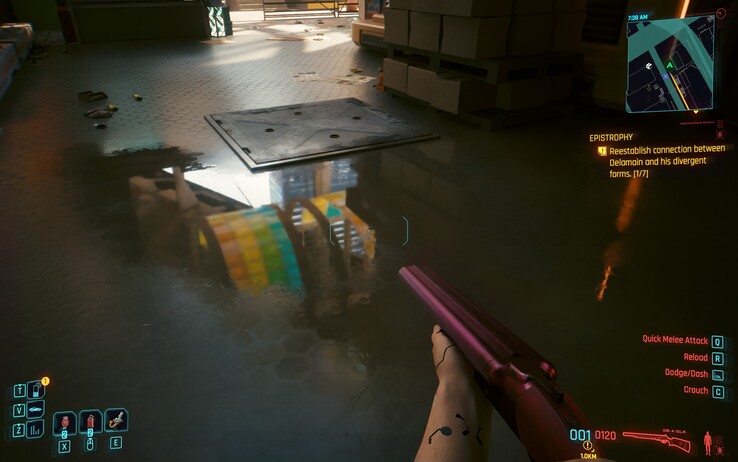
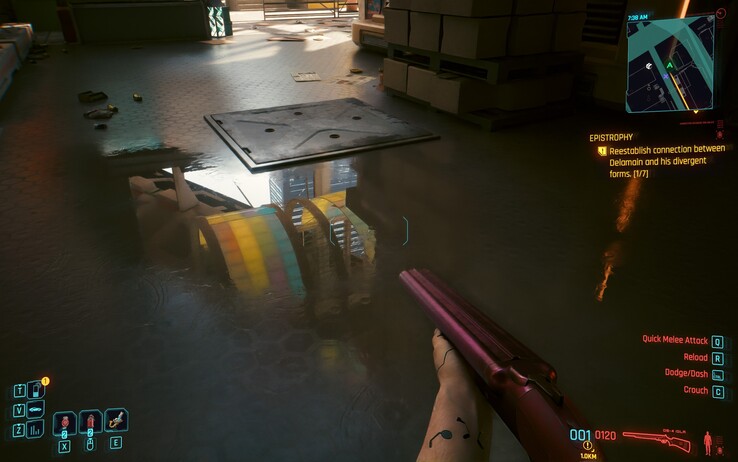
Clear reflections, realistic shadows and that extra bit of realism thanks to ray reconstruction and pathtracing.
Of course, it's not just Cyberpunk that offers the new technology, and we took a closer look at Remedy's Alan Wake II on our YouTube channel. In addition to the gripping story, the adventure game also offers pathtracing and ray reconstruction and is also one of the most beautiful games of the current generation.
Content Creation - pure performance and modern features for creatives
In addition to virtual entertainment, Nvidia GPUs also offer enormous advantages at work with the combination of the corresponding hardware in the form of CUDA, RT and Tensor cores and the extensive software support in common creative apps.
Image generation with stable diffusion
As a synthetic basis, we start with UL Procyon, a modern benchmark suite that allows a general classification of performance with short tests and the advantages of the dedicated graphics solutions are clearly evident in our results.
Stable Diffusion can fall back directly on the Tensor cores of the RTX 4070 for image generation, which have been specially optimized for AI applications, and compared to the integrated 890m, the advantage cannot be denied and the speed advantage is particularly welcome for iterative work.
Our reference system, the ROG Zephyrus G16, also impressively demonstrates that the performance offered does not always go hand in hand with a large, heavy and unwieldy form factor.
| UL Procyon for Windows | |
| Image Generation Stable Diffusion 1.5 (FP16) | |
| Asus ROG Zephyrus G16 GA605WI | |
| Asus ROG Zephyrus G16 GA605WI | |
| Overall Image generation Speed | |
| Asus ROG Zephyrus G16 GA605WI | |
| Asus ROG Zephyrus G16 GA605WI | |
* ... smaller is better
Blender - RT cores FTW!
Artificial intelligence may be the buzzword of the tech world at the moment, but even in more traditional applications, GPU acceleration is more important than ever. Especially in CGI applications, when 3D models, textures or entire worlds are created artificially, a large part of the corresponding calculations run on the graphics card.
The RT cores of the current 4000 generation not only accelerate ray tracing in games, but also on the other side, for example in the open source tool Blender.
The Classroom Test has been an integral part of our standard benchmarks for some time and Nvidia's dedicated solutions have been at the top of our database for some time. In the latest version 4.2, the 4070 only needs a few seconds for the test frame, while several minutes are required on the 890m or with classic CPU rendering.
| Render Engine | Duration |
|---|---|
| Nvidia RTX 4070 Laptop | 0 min 20s |
| AMD RX 890m | 3 min 35s |
| AMD Ryzen 370 HX | 4 min 25s |
Davinci Resolve 19 - Craftsmanship meets AI
For our YouTube channel, we rely on Davinci Resolve from BlackMagic for production and over the past two years, more and more AI tools have also found their way into the professional editing and color grading program. In addition to practical transcription options, upscaling and automatic HDR conversion, even the frame rate of entire clips can be recalculated and the tensor cores of Nvidia GPUs are increasingly being used here too.
In order to compare the corresponding performance, we have used the corresponding benchmark from the experts at Puget Bench in the extended version, which also tests AI performance in particular. Unfortunately, the 890m is not able to complete the test, which is why we also carried out the basic test to enable a comparison.
On our YouTube channel, we also offer a look behind the scenes and shed light on how we edit our videos in detail and what difference the AI functions in Resolve actually make in everyday life.
| DaVinci Resolve PugetBench | |
| Extended Score 1.1 | |
| Asus ROG Zephyrus G16 GA605WI | |
| Basic Score 1.1 | |
| Asus ROG Zephyrus G16 GA605WI | |
| Asus ROG Zephyrus G16 GA605WI | |
| AI Score (Extended) | |
| Asus ROG Zephyrus G16 GA605WI | |
ON1 - Go big!
As a final example of practical AI applications, let's take a look at the upscaling solution for photos from ON1. As a stand-alone application or as a plug-in for industry standards such as Photoshop, the magnification specialists offer all kinds of setting options for enlarging images. Using 5 sample images, we tested the computing power required for a magnification of 200% and whether the waiting time is long enough for an espresso.
While the RTX 4070 has probably not even ground the beans yet, the 890m offers a little more leeway, while the CPU calculation is sufficient for a whole coffee break.
| Render Engine | Duration |
|---|---|
| Nvidia RTX 4070 Laptop | 52s |
| AMD RX 890m | 182s |
| AMD Ryzen 370 HX | 2059s |
Conclusion - Software and hardware in harmony
AI is now everywhere and is admittedly also used in an enormously inflationary way and, especially in the tech sector, it has now become very difficult to determine what modern processors and graphics cards can do based on tangible results. While dedicated GPUs will of course always have a performance advantage over integrated solutions, energy requirements have also fallen significantly in recent years, while performance has improved many times over. As a result, there are now notebooks with Nvidia GPUs in extremely compact housings that were previously reserved for much less powerful laptops.
The G16 is the perfect example of this trend and, with the RTX 4070, offers gaming performance that is capable of firing up the QHD+ screen in the latest AAA titles with maximum details and modern ray tracing effects and application performance that turns the slim 16-inch laptop into a mobile workstation.
AI functions are deeply integrated into Nvidia's hardware and software, so technologies such as DLSS and frame generation multiply the frame rates of our games and shorten waiting times at work.
And it is the implementation of these functions and the support on the software side that gives Nvidia an unrivaled unique selling point in the search for the (almost) perfect laptop.
Transparency
This article is a paid placement. All content was provided by the advertiser.




